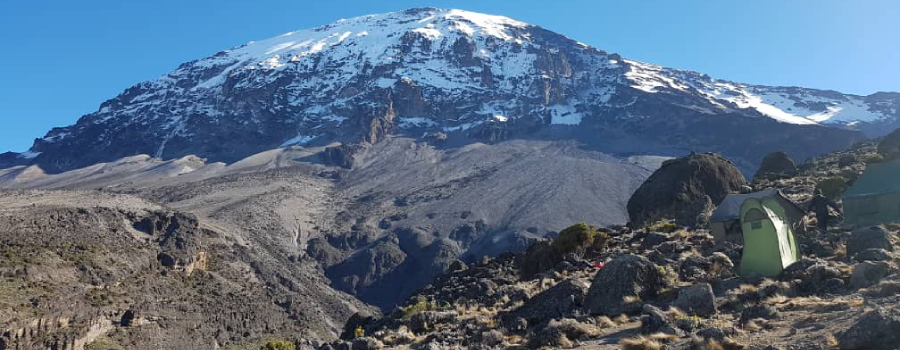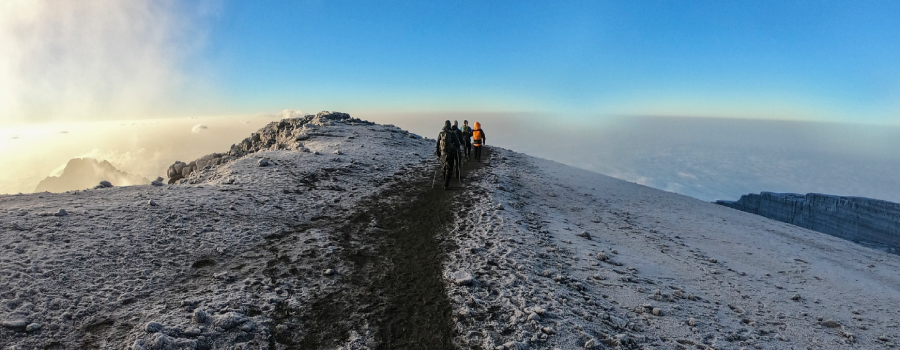Climbing Mount Kilimanjaro is one of the most life-changing adventures you can experience in Africa.
But for beginners, the journey to the summit of Africa’s highest peak may seem overwhelming.
In this context, beginners refer to individuals with little to no prior experience in high-altitude trekking or mountain climbing.
If you’re planning a Kilimanjaro Climb for Beginners, this comprehensive guide will walk you through everything you need to know, from choosing the right route and training tips to expert advice from those who’ve conquered the mountain.
Mount Kilimanjaro is unique among the world’s tallest peaks. Unlike Mount Everest or other high-altitude giants, Kilimanjaro doesn’t require technical climbing experience. You don’t need ropes, crampons, or prior mountaineering skills. That’s why the Kilimanjaro Climb for Beginners has become a popular adventure for regular travelers looking to push their limits.
Pro Tip: Choose the right time of year, January to March and June to October for the best climbing weather and fewer rain-related challenges.
The route is the path you follow to reach the summit of Mount Kilimanjaro. There are several official routes, each with different levels of difficulty, scenery, and success rates. Routes are typically categorized by how many days they take, how steep they are, how well they help your body adjust to altitude, and whether you sleep in tents or huts.
For beginners, the right route can make or break your climb. A poor choice can lead to altitude sickness, exhaustion, and a lower chance of reaching the summit.
Best Routes for First-Time Climbers:
Our Tip: If it’s your first time at high altitude, choose a longer route like Lemosho (8 days). The extra days give your body time to adapt, which increases safety and summit success.

Physical preparation is key. While you don’t need to be a marathon runner, you should be in good shape.
Training Plan:
Pro Tip: Hike on uneven terrain to simulate Kilimanjaro’s trails. Practice with your actual boots and gear to break them in and avoid surprises.
Packing right is half the battle. Kilimanjaro’s climate zones range from rainforest to arctic, so layers are essential. We have a full article about Kilimanjaro Packing Tips; you may read it here.
Packing List Highlights:
Pro Tip: Always carry snacks with high energy content like energy bars, dried fruits, or nuts. You’ll need extra fuel on summit night.
Your day on the mountain typically follows this pattern:
Pro Tip: Summit day begins around midnight. Getting mentally prepared for the hardest part of the climb, which is 7 to 8 hours in the cold, with thin air and steep terrain. But sunrise at Uhuru Peak? Worth every step.
Altitude sickness is the number one concern for beginners. Pay close attention to how you feel.
Health Tips:
Pro Tip: Take Diamox (acetazolamide) after consulting your doctor, it can help with acclimatization. Always carry your personal first aid kit, including any prescription meds.
The mental challenge is often harder than the physical one. Fatigue, cold, and altitude can test your resolve.
Strategies for Mental Strength:
You may want to: Bring a photo or object that motivates you. When things get tough, take it out and remind yourself why you’re climbing.

For a successful Kilimanjaro Climb for Beginners, the team you choose matters. You want to choose an operator that has licensed and experienced guides, high-quality gear and safety protocols, and transparent pricing and inclusions.
Choose Lora Adventures Africa for your trek for a successful and life-changing experience.
At Lora Adventures Africa, we’ve designed our climbs with beginners in mind, focusing on the key elements that truly make a difference:
Pro Tip: Avoid operators that promise cheap Kilimanjaro climbs and are shorter than the standard duration of the climb. These shortcuts mean a burden to the crew as they get paid unfairly, plus they increase your risk of altitude sickness and lower your chances of success.
A Kilimanjaro Climb for Beginners may feel intimidating, but with the right preparation, guidance, and mindset, it becomes one of the most empowering adventures of your life. Take it one step at a time, listen to your body, and trust your team.
Whether you’re dreaming of standing at Uhuru Peak or simply want to challenge yourself in a new way, climbing Kilimanjaro is a journey worth taking.
Ready to start your Kilimanjaro Climb for Beginners? Contact us today for expert advice, personalized itineraries, and experienced local guides who will make your summit dream a reality.
+255 767 626 058
info@loraadventuresafrica.com
Arusha, Tanzania

© 2025 Lora Adventures Africa. All Rights Reserved.